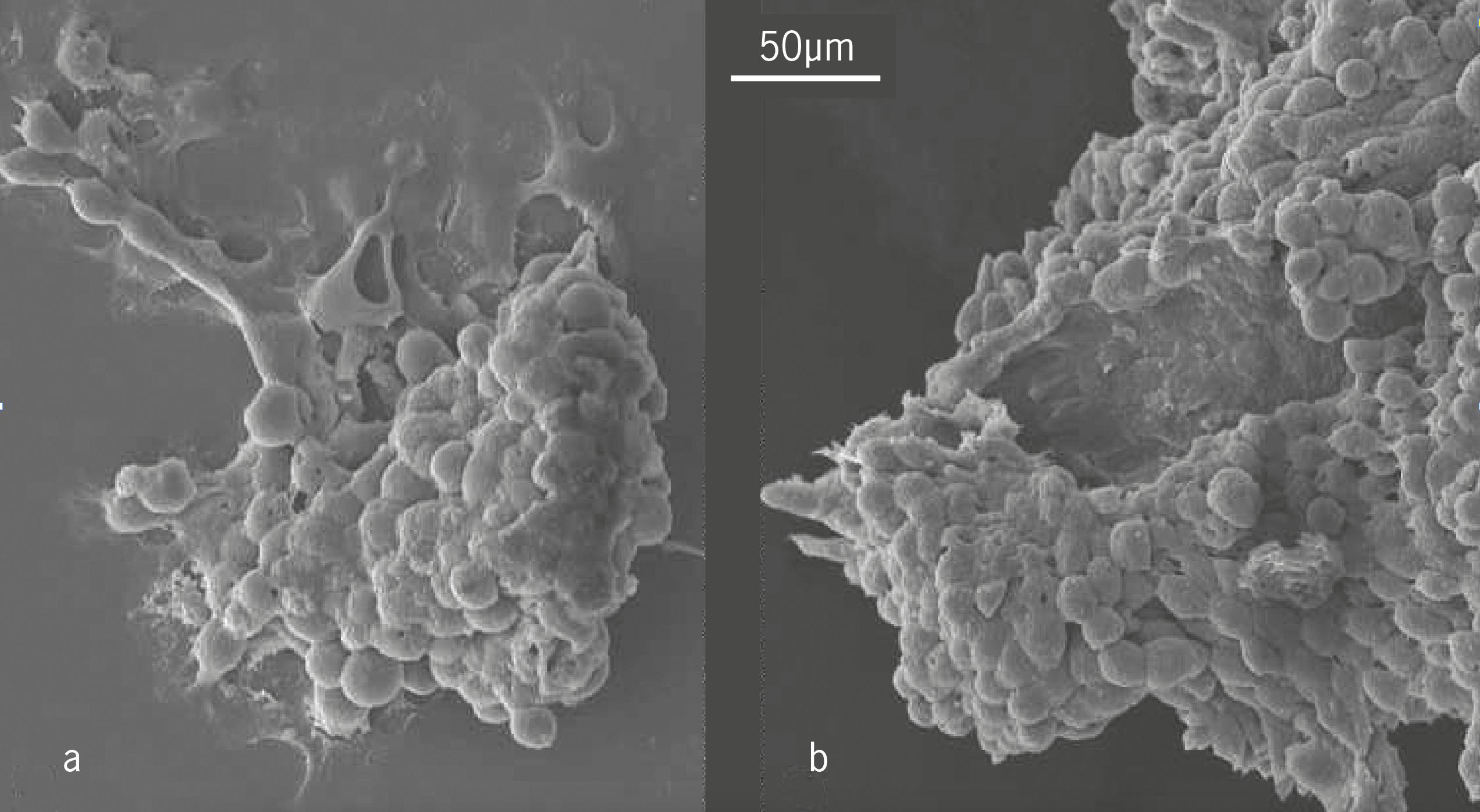PhD student Mr Theo Orfanos, working with A/Prof. John Foster at the University of New South Wales (UNSW), is studying the effects of microgravity on tumourigenesis by comparing the morphology of cancerous cell aggregates grown under standard mammalian cell culture conditions with aggregates grown in simulated microgravity. Here, the cells are grown in a rotating wall vessel bioreactor, which forces the cells into a constant state of free-fall and, therefore, simulated microgravity.

SEM showing a multicellular aggregates of (a) HepG2 liver cancer cells grown in standard conditions. (b) HepG2 cells grown under conditions of simulated microgravity.
Using scanning electron microscopy and analytical software at the AMMRF (now Microscopy Australia) at UNSW, the researchers compared cancer cells grown in simulated microgravity with those grown in standard culture conditions. They observed that multicellular aggregates of many types of cancer cells were much larger in simulated microgravity, but that the individual cells were almost half the size, a significant decrease. They also saw large smooth areas on the surface of these aggregates that were not present in standard culture conditions. By using a protein-based approach they demonstrated that exposure to microgravity also removes a molecular signalling pathway present in many of the cell types. These effects have not been seen before, making this a new frontier in cell biology.
With more space travel on the horizon, such as Mars missions and space tourism, the group hopes to expose any associated risks so that measures can be employed to protect the travellers.
Image credit: NASA
October 24, 2014